












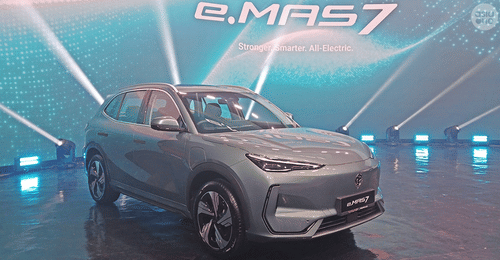

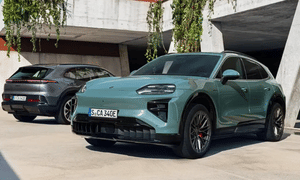










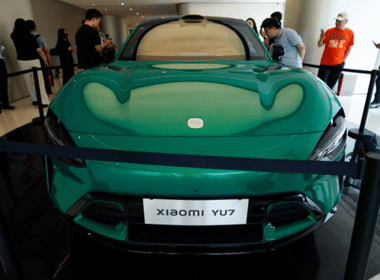
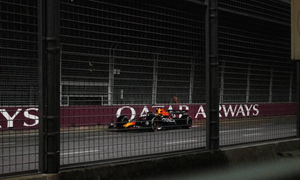




Miss Mexico Fatima Bosch was crowned Miss Universe 2025 on November 21 during the grand finale held in Bangkok, Thailand. At 25, she became the fourth woman from Mexico to win the prestigious title and the 74th winner in the pageant’s history. Bosch earned the crown after competing against a strong group of finalists, including Miss Thailand Praveenar Singh, Miss Venezuela Stephany Abasali, Miss Philippines Ma Ahtisa Manalo, and Miss Côte d’Ivoire Olivia Yace.
Her victory followed weeks of intense attention after a viral confrontation with Thai pageant executive Nawat Itsaragrisil. During a livestream on November 4, Nawat publicly reprimanded Bosch for not posting promotional materials and appeared to insult her by calling her a “dumb head.” The remark prompted Bosch to walk out of the room, a move that several other contestants supported by following her out. Shortly after the incident, Bosch shared a message on social media saying that if something costs a person their dignity, it is better to walk away.
Nawat later offered a public apology, explaining that the pressure of the event had caused him to lose control. He said he did not intend to insult anyone and later claimed that he had not called Bosch a “dumb head,” but had used the word “damage” instead. His behaviour drew criticism from Raul Rocha, president of the Miss Universe Organization, who condemned his actions and announced that the Thai director’s participation in future events would be limited.
The 2025 pageant faced several other controversies as well. A week after the walkout incident, two judges resigned, one of whom, Omar Harfouch, claimed that the competition had been rigged. He stated on social media that two days before the final, a secret vote had been held to pre-select 30 contestants, even though the individuals involved were not official members of the judging panel. The Miss Universe Organization rejected these allegations, insisting that no external group had been authorized to evaluate contestants or choose finalists.
Adding to the tension, Miss Jamaica Gabrielle Henry fell off the stage during the preliminary evening gown round on November 19 and had to be taken out on a stretcher. An update released on November 25 confirmed that she had been treated at the hospital and had not suffered any broken bones.
Despite the controversies that surrounded this year’s event, Fatima Bosch’s achievement remains a defining moment. Her grace under pressure and her ability to stand firm in the face of criticism earned admiration from audiences around the world, ensuring that her Miss Universe 2025 win will be remembered long after the noise surrounding the pageant fades.
Disclaimer: This image is taken from Insta/missuniverse.

Have you ever wanted to go on a cruise without committing to an overnight stay? Next month, that option will become available. The new World Legacy cruise allows guests the flexibility to either spend a few hours on the ship or extend their stay to an overnight or a three-day two-night experience, according to World Cruises in a press release on November 18. Unlike most cruises that typically require a minimum one-night stay depending on the itinerary, this cruise offers more freedom for travelers.
Guests can board and disembark the ship via a ferry system, with departures from both the Singapore Cruise Centre and JB Puteri Harbour Cruise Centre at various times throughout the day. In addition to these daily ferry transfers, World Legacy will make weekly stops at Harbourfront Centre every Friday, allowing passengers to board directly from Singapore without needing a ferry. Preview voyages will begin on December 18, with embarkation via a dedicated ferry from the Singapore Cruise Centre at Harbourfront Centre.
According to Martin Blanar, vice president of the brand's hotel operations, World Legacy was designed for those seeking a quick getaway without the limitations of a traditional holiday. Guests can enjoy nightlife, dining, and entertainment at their own pace. Visitors can come aboard, relax, indulge, and even party through the night before disembarking whenever they choose. With the rising cost of a typical night out, this cruise offers a refreshing duty-free alternative where passengers can disconnect, recharge, and enjoy themselves.
During the day, the ship offers wellness activities such as spa services, while evenings are filled with entertainment, drinks, and live music. Clubhouse 88 serves as a sports bar featuring live screenings of international sporting events, themed nights, and a curated bar menu. Illusion Bar provides a theatrical speakeasy experience with immersive cocktails and entertainment, while Legacy Theatre hosts live performances by renowned singers from across Asia in an intimate livehouse setting. Other onboard activities include a kids arcade and private karaoke suites. By 2026, guests will also be able to enjoy panoramic views of the Straits from the Sunset Deck, which will host activities throughout the day including morning wellness sessions, golden hour music and drinks, and nightlong entertainment, while also serving as a space for private events.
Food lovers will find a variety of dining options onboard. The Legacy Buffet offers an international selection of cuisines, while Uncle Wu Cafe provides Asian-inspired casual meals around the clock. For a more refined experience, guests can dine at Orchid Pavilion, which serves traditional Chinese dishes.
The ship features approximately 300 cabins, ranging from small two-person rooms to larger family cabins that can accommodate three to four people, with VIP suites available for those seeking a luxurious stay. Cabin rates for a three-day two-night stay start at 128 USD for a Standard Two Single Interior room. Ferry tickets are priced at 58 USD online and 78 USD walk-in for adults, 38 USD online and 58 USD walk-in for senior citizens aged 60 and above, and 10 USD online and 20 USD walk-in for children aged 12 and below. Tickets include port and local taxes, non-halal meals on Deck 3, and a luggage allowance of one hand carry bag of seven kilograms and one check-in bag of 20 kilograms per guest. Ferry tickets also allow passengers to remain on board for up to 20 hours without a cabin, with extension fees applicable. To mark the launch, the cruise is offering a promotional package at 89 USD per person for a three-day two-night stay for two guests. This package includes ferry transfers, buffet breakfast, and full-day meals on Deck 3, giving passengers a chance to experience the cruise in style.
Disclaimer: This image is taken from World Cruises.
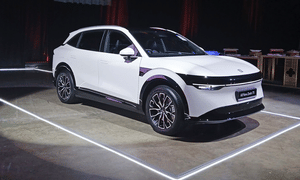
Zeekr has officially launched its 7X electric crossover in Singapore, joining the X small crossover and the 009 luxury MPV in the brand’s local lineup. The 7X is a mid-sized crossover, comparable in size to the BMW X3 and Mercedes-Benz GLC. Zeekr aims to attract buyers in this segment by offering strong performance, premium features, and high-quality craftsmanship at a competitive price. In Singapore, the 7X will be available in three variants: the Standard RWD with a 75kWh battery, the Long Range RWD with a 100kWh battery, and the top-spec Performance AWD with a 100kWh battery.
Even the base Standard model delivers an impressive 410hp and 440Nm of torque, enabling a 0-100 km/h sprint in six seconds. The Long Range RWD matches this performance, while the Performance AWD boosts output to 637hp and 710Nm of torque, achieving 0-100 km/h in just 3.9 seconds.
All three models feature an 800-volt electrical architecture with supercharging capability. Charging speeds are rated up to 450kW for the Standard 75kWh battery, and 420kW for the Long Range and Performance 100kWh batteries. Fully charged, the Standard offers a range of 480 km, while the Long Range and Performance reach 615 km and 543 km, respectively.
Standard equipment includes a 13-inch digital driver display and a 16-inch central touchscreen, along with two wireless smartphone chargers and rear seats that can recline electrically up to 10 degrees. The Long Range and Performance variants add luxury touches such as ventilated front seats with massage functions and a 21-speaker premium sound system. Optional upgrades include an automatic door opening system and, on the Performance model, a Stargate front light panel capable of displaying pre-set messages.
Pricing starts at $239,999 with COE for the 7X Standard, rising to $272,999 for the Long Range and $295,999 for the Performance variant (as of September 2025). Zeekr is relying on the 7X to strengthen its growing presence in Singapore, and early demand has been strong, with 100 units sold even before the official launch.
Disclaimer: This image is taken from AsiaOne/Ben Chia.

Step into a galaxy not so far away at Singapore’s Changi Airport Terminal 3, where an extraordinary pop-up library invites Star Wars fans and curious travelers alike to immerse themselves in the iconic universe of the beloved saga. This unique Star Wars-themed library, which runs daily from 10 am to 10 pm until January 24, 2026, offers a stellar collection of over 2,000 titles spanning every corner of the Star Wars lore—from classic comics and novels to cookbooks and early readers for young Padawans.
Located conveniently on Level 2 near the Skytrain and the link bridge to Jewel, this pop-up is a collaboration between Singapore’s National Library Board (NLB), Disney, and Changi Airport Group, marking a special chapter in NLB’s 30th-anniversary celebrations. The library space cleverly combines physical books with digital resources, including eBooks and interactive screens showcasing famous Star Wars backdrops for perfect photo ops.
One of the highlights that sets this library apart is its innovative use of robotics. Visitors can select books from a touchscreen kiosk, after which a robotic arm swiftly retrieves the desired titles from enclosed shelves, delivering them directly to the collection point. This automated system not only adds an exciting, futuristic flair but also streamlines the borrowing and returning process, enabling a smooth and engaging visitor experience.
But the magic doesn’t stop at reading. The library invites fans to test their Star Wars expertise with trivia challenges, discover their Jedi or Sith persona through personality quizzes, and enjoy themed activities that bring the galaxy far, far away closer to home. Iconic droids like R2-D2 and C-3PO even make appearances for memorable photo moments.
Whether you're a lifelong Star Wars enthusiast, a family with young adventurers, or a traveler looking for a captivating detour, this pop-up library is a perfect fusion of fandom, technology, and storytelling. It celebrates the rich storytelling tradition of Star Wars while championing the joy of reading in an engaging, interactive environment.
To borrow any books, visitors can use the NLB Mobile app to scan QR codes, and returns can be made at the pop-up or any National Library in Singapore with ease, making this an accessible and welcoming portal to the Star Wars universe. This imaginative initiative not only celebrates a legendary franchise but also highlights how libraries can reinvent themselves to inspire and connect with new generations in fresh, unexpected ways. So, next time you’re passing through Changi Airport Terminal 3, may the Force—and a great story—be with you.
Disclaimer: This image is taken from Facebook/National Library Board.



For the rest of December, every Monday and Friday, we revisit some of our favourite audio long reads of 2025, each introduced by our editors. From October: Ben Giles, an extreme cleaner, has tackled everything from crime scenes to whale blubber, restoring order when people need it most. Written by Tom Lamont, read by Elis James.
Disclaimer: This podcast is taken from The Guardian.

On ‘Culture Club’, Melanie Oliveiro speaks with Her Excellency Jessica María López, Venezuela’s Ambassador to Singapore, about her country’s key cultural traditions, foods, drinks, and travel highlights. She discusses must-visit destinations such as Angel Falls and Caracas, as well as customs like Carnaval, joropo dancing, and family-oriented dishes such as arepas. Ambassador López also highlights cocuy, a traditional spirit central to Venezuelan drinking culture. Representatives from the restaurant Chimichanga will join to explain cocuy and how it differs from tequila and mezcal.
Disclaimer: This Podcast is taken from CNA.

In Made in SG, Melanie Oliveiro interviews Singaporean writer Alexander Ee about his book A Glimpse of Heaven: Grief, Self and Community on the Camino. The book recounts his process of navigating sorrow and finding acceptance after his wife passed away from cancer in 2019. It also chronicles his two-month, 925-kilometre walk along the Camino de Santiago — a historic pilgrimage route made up of interconnected trails across Europe that end in Santiago de Compostela, Spain. Ee reflects on how the journey helped him confront loss, discover deeper meaning in life, and understand the importance of gratitude and forgiveness, themes that are central to the book.
Disclaimer: This Podcast is taken from CNA.

In this episode of Destination Anywhere, producer Vaisali Prabhakaran chats with Shu Qin, known online as Shuutravels, about experiencing Spain far from the usual tourist hotspots. From the majestic Alhambra in Granada to Seville’s passionate flamenco scene and Córdoba’s rich cultural heritage, Shu Qin highlights the enduring allure of Andalusia. She also offers helpful advice on uncovering Spain’s lesser-known treasures—whether through scenic trails, regional cuisine, smart travel routes, the best seasons to go, or essential items to pack for an unforgettable trip.
Disclaimer: This Podcast is taken from CNA.









